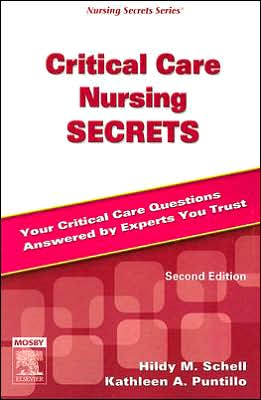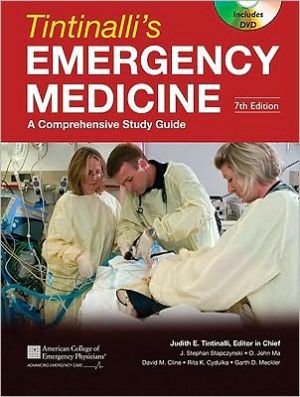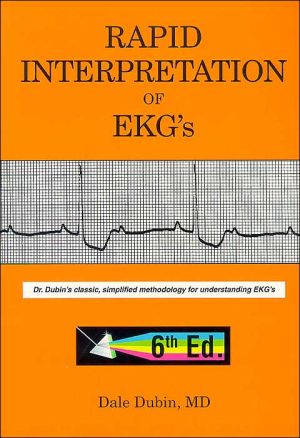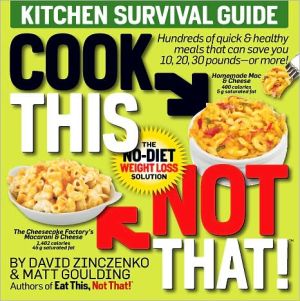Critical Care Nursing Secrets
Part of the Nursing Secrets Series®, Critical Care Nursing Secrets is designed to be helpful for both new and experienced critical care nurses. New graduates, novice nurses, or those nurses returning to work in the field will find the book especially helpful in learning the "pearls" or "secrets" of practice. Written in a question-and-answer format, each of the 79 chapters has helpful features such as key points and Internet resources.\ • Written by experts in the field.\ • Question-and-answer...
Search in google:
Part of the Nursing Secrets Series®, Critical Care Nursing Secrets is designed to be helpful for both new and experienced critical care nurses. New graduates, novice nurses, or those nurses returning to work in the field will find the book especially helpful in learning the "pearls" or "secrets" of practice. Written in a question-and-answer format, each of the 79 chapters has helpful features such as key points and Internet resources.• Written by experts in the field. • Question-and-answer format for concise reading. • Designed for both the experienced and new nurse. • Top secrets listed in the front of book give readers the top 50 key points they should know about critical care nursing. • Key Points boxes in each chapter outlines important points to the reader. • Internet Resources boxes offer readers additional information via the web. • Effective two-color design allows reader to easily find answers.• Updated content throughout. • 9 new chapters: Heart Failure; Aortic Aneurysm and Dissection; Thrombocytopenia: HIT, ITP, TTP; Coagulopathy and Transfusion; Liver, Pancreas, and Renal Transplantation; Rhabdomyolysis; Hyperglycemia and Diabetes Mellitus; Endocrine Disorders; and Skin and Soft Tissue Infections. Doody Review Services Reviewer:Janice J Hoffman, RN, PhD(Johns Hopkins University School of Nursing)Description:This is critical care nursing book is organized by major body systems and provides essential information in a practical format for the critical care nurse at the bedside. Purpose:The purpose is to provide both novice and experienced critical care nurses updated and practical information needed in the ever-changing critical care environment. Due to the increasing complexity and acuity of critical care patients, this book provides content important to nurses in both general and specialty intensive care and step-down settings.Audience:This book is written for both students and practitioners in critical care nursing. The basic assessment and monitoring content is appropriate for students and new practitioners, and the more advanced concepts and detailed tables provide support to more experienced critical care nurses.Features:Containing 79 chapters, this book is organized by major body systems. Additionally, the book covers information on pain and sedation, alcohol and drugs, alcohol withdrawal, as well as end of life care. Each chapter is presented in a question and answer format, followed by a summary of key points, Internet resources, and bibliography. The tables are particularly detailed and present up-to-date information related to cardiac and hemodynamic monitoring, vasoactive medications, acid-base analysis, etc. The intracranial monitoring content is not as detailed as cardiac and hemodynamic, and would benefit from more illustrations regarding placement of catheters/monitors, positioning, etc.Assessment:This is an excellent resource for both novice and expert critical care nurses. Information is clearly presented with adequate explanations, and cross references in the text to other sections of the book are particularly effective. The question and answer format is a unique feature of this book, further making it a practical bedside reference.
1Cardiovascular assessment32Basic cardiac monitoring143Arrhythmias214Temporary pacing285Blood pressure monitoring : invasive and noninvasive366Hemodynamic monitoring477Cardiac output monitoring638Acute coronary syndromes779Heart failure8510Pulmonary hypertension9611Aortic aneurysm and dissection10212Postoperative management of the cardiac surgery patient11313Heart and lung transplantation12214Intraaortic balloon pump therapy13615Ventricular assist devices14416Defibrillation and cardioversion15517Deep vein thrombosis and pulmonary embolism16218Vasoactive medications17319Central venous catheters18520Shock20321SvO[subscript 2], ScvO[subscript 2], and AvDO[subscript 2] monitoring21022Intraabdominal compartment syndrome22023Acid-base disorders and arterial blood gas interpretation22824Respiratory assessment24125Airway management24726Acute respiratory failure25527Status asthmaticus26728Acute lung injury and acute respiratory distress syndrome27329Pulse oximetry and capnography28430Oxygen delivery systems29131Noninvasive positive-pressure ventilation29532Endotracheal and tracheostomy tube management30333Mechanical ventilation and weaning32134Suctioning33235Positioning for optimal pulmonary function34136Chest tube management34937Extracorporeal life support and extracorporeal membrane oxygenation35838Fever36739Sepsis and systemic inflammatory response syndrome37940Infection control38741Infectious disease and antibiotics39342Oncologic emergencies39843Leukemias and bone marrow transplantation41544Thrombocytopenia : HIT, ITP, and TTP42345Coagulopathy and transfusion43246Noninvasive neurologic monitoring45147Invasive neurologic monitoring46648Stroke monitoring and management47649Seizure assessment and management49150Neuromuscular disorders : Guillain-Barre syndrome and myasthenia gravis50651Nutrition assessment and management51552Diarrhea52153Feeding tubes : placement and management52454Acute pancreatitis52955Liver dysfunction and failure53956Gastrointestinal bleeding55057Acute renal failure55958Continuous renal replacement therapies57159Liver, pancreas, and renal transplantation58060Rhabdomyolysis59161Hyperglycemia and diabetes mellitus59962Diabetic ketoacidosis and hyperglycemic hyperosmolar state61163Endocrine disorders62164Electrolyte disturbances63465Delirium65366Sedation66067Pain management67268Epidural analgesia68369Neuromuscular blocking agents69270Drug overdoses70571Alcohol withdrawal71872Skin and wound assessment and management73373Skin and soft tissue infections74374Pressure ulcer assessment and management74775Physical therapy75276Family care76777End-of-life care77378Brain death and organ procurement78079Critically ill obstetric patients786
\ From The CriticsReviewer: Janice J Hoffman, RN, PhD(Johns Hopkins University School of Nursing)\ Description: This is critical care nursing book is organized by major body systems and provides essential information in a practical format for the critical care nurse at the bedside. \ Purpose: The purpose is to provide both novice and experienced critical care nurses updated and practical information needed in the ever-changing critical care environment. Due to the increasing complexity and acuity of critical care patients, this book provides content important to nurses in both general and specialty intensive care and step-down settings.\ Audience: This book is written for both students and practitioners in critical care nursing. The basic assessment and monitoring content is appropriate for students and new practitioners, and the more advanced concepts and detailed tables provide support to more experienced critical care nurses.\ Features: Containing 79 chapters, this book is organized by major body systems. Additionally, the book covers information on pain and sedation, alcohol and drugs, alcohol withdrawal, as well as end of life care. Each chapter is presented in a question and answer format, followed by a summary of key points, Internet resources, and bibliography. The tables are particularly detailed and present up-to-date information related to cardiac and hemodynamic monitoring, vasoactive medications, acid-base analysis, etc. The intracranial monitoring content is not as detailed as cardiac and hemodynamic, and would benefit from more illustrations regarding placement of catheters/monitors, positioning, etc.\ Assessment: This is an excellent resource for both novice and expert critical care nurses. Information is clearly presented with adequate explanations, and cross references in the text to other sections of the book are particularly effective. The question and answer format is a unique feature of this book, further making it a practical bedside reference.\ \








